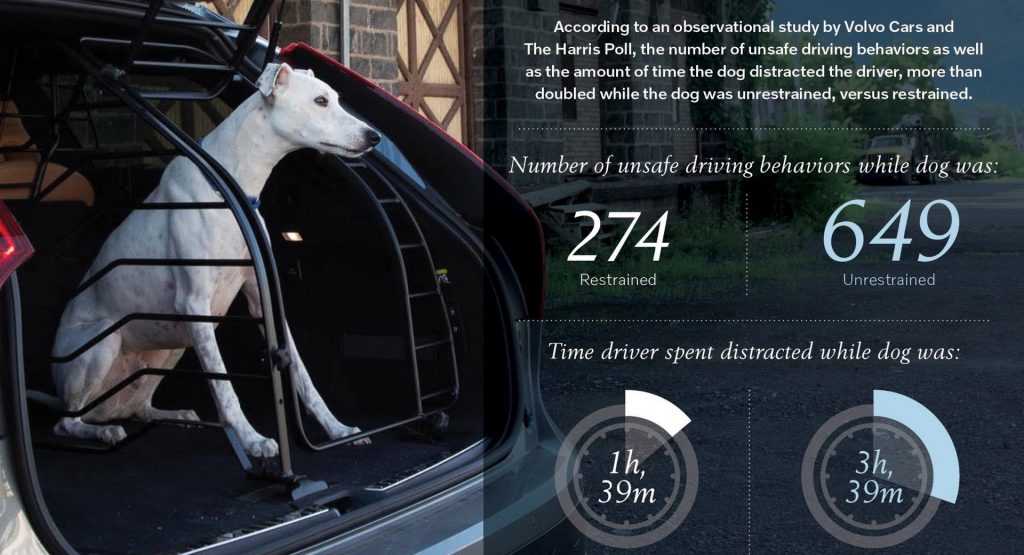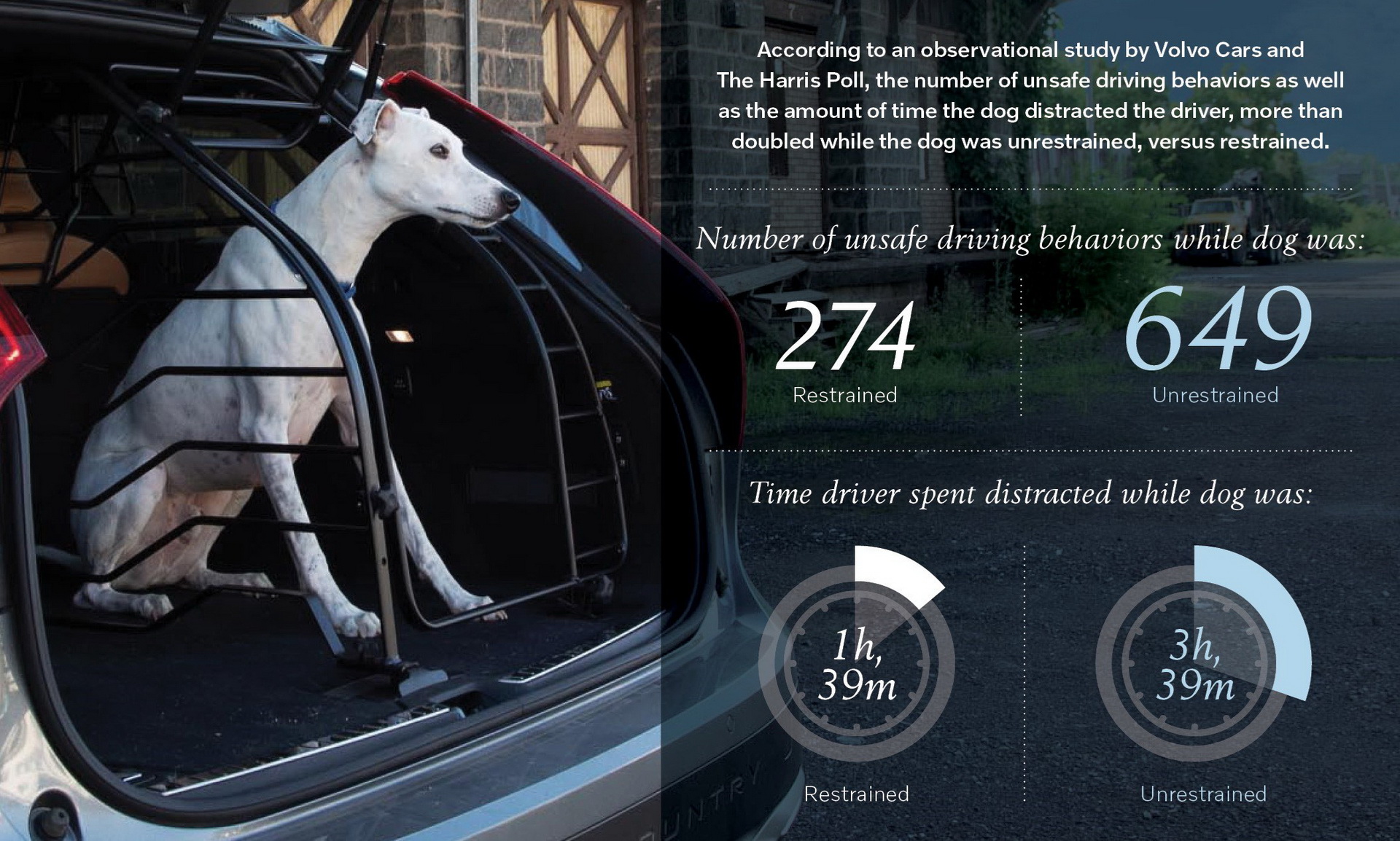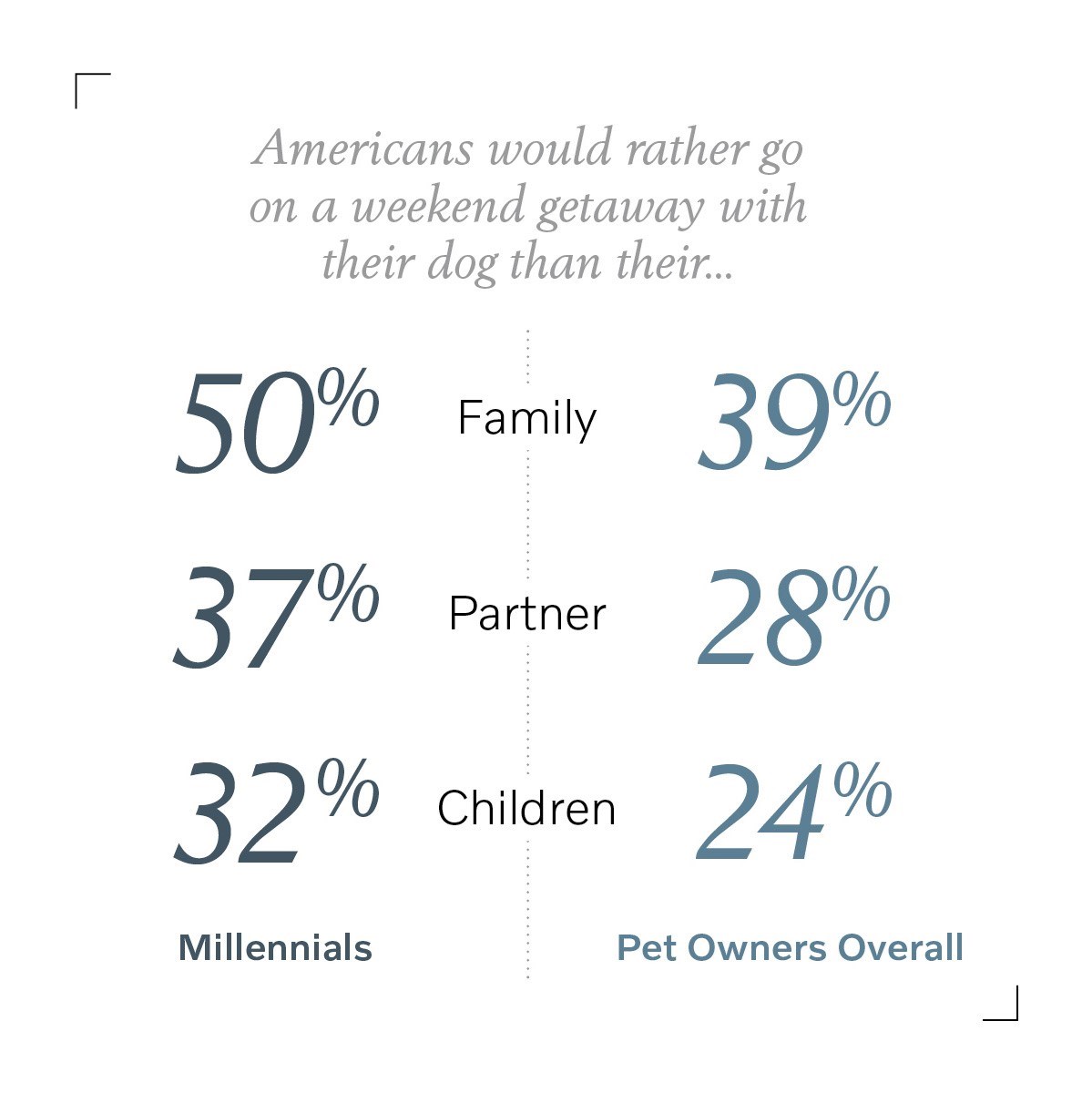A new study by Volvo and The Harris Poll shows that having unrestrained pets in the car is not only stressful on both drivers and their four-legged companions, but can also lead to unsafe driving behavior.
The study featured 15 drivers and their dogs, who were followed for more than 30 hours on the road in order to examine how unrestrained pets affected driving behavior, as opposed to when owners used restraints such as seat belts, harnesses, crates or carriers.
The findings showed that, when pets were allowed to roam free inside the car, unsafe behavior more than doubled (649 instances vs 274). Incidents included the dog climbing on the driver’s lap, or hanging its head out the window.
Also Read: U.S. Senator Wants Law To Protect People Who Save Pets From Hot Cars
Another negative was that drivers were distracted a lot more (3 hrs 39 min unrestrained vs 1 hr 39 min restrained). It’s moments like when your dog jumps from seat to seat that can result in you taking your eyes off the road.
As for stress, it’s only natural that drivers feel calmer when they know that their dogs are buckled in, with heart rates dropping as much as 28 and 34 beats per minute, respectively.
“While pets roaming around the car can be cute and convenient, it poses serious risk for both drivers and their pets, both in terms of causing distractions and increasing the chances of serious injury in the event of an accident,” said Dr. Elisa Mazzaferro. “Unfortunately, in my field, we see the potential devastating consequences regularly, many of which can avoided by simply ensuring our animals are safely secured.”
Volvo considers itself the leading carmaker in terms of developing safety accessories for pets that directly tie into the safety systems of the vehicle. Such accessories include a dog harness, a load compartment divider, a dog gate and a protective steel grille.









